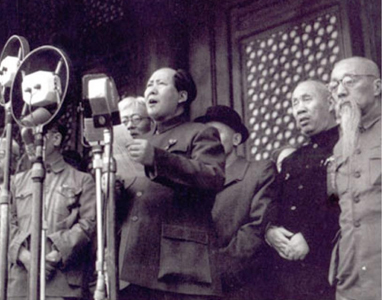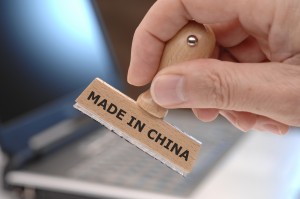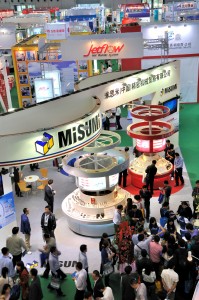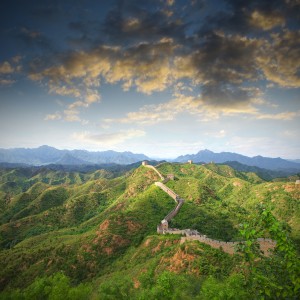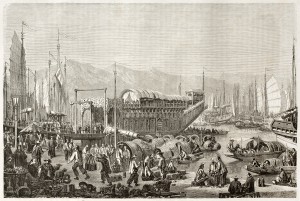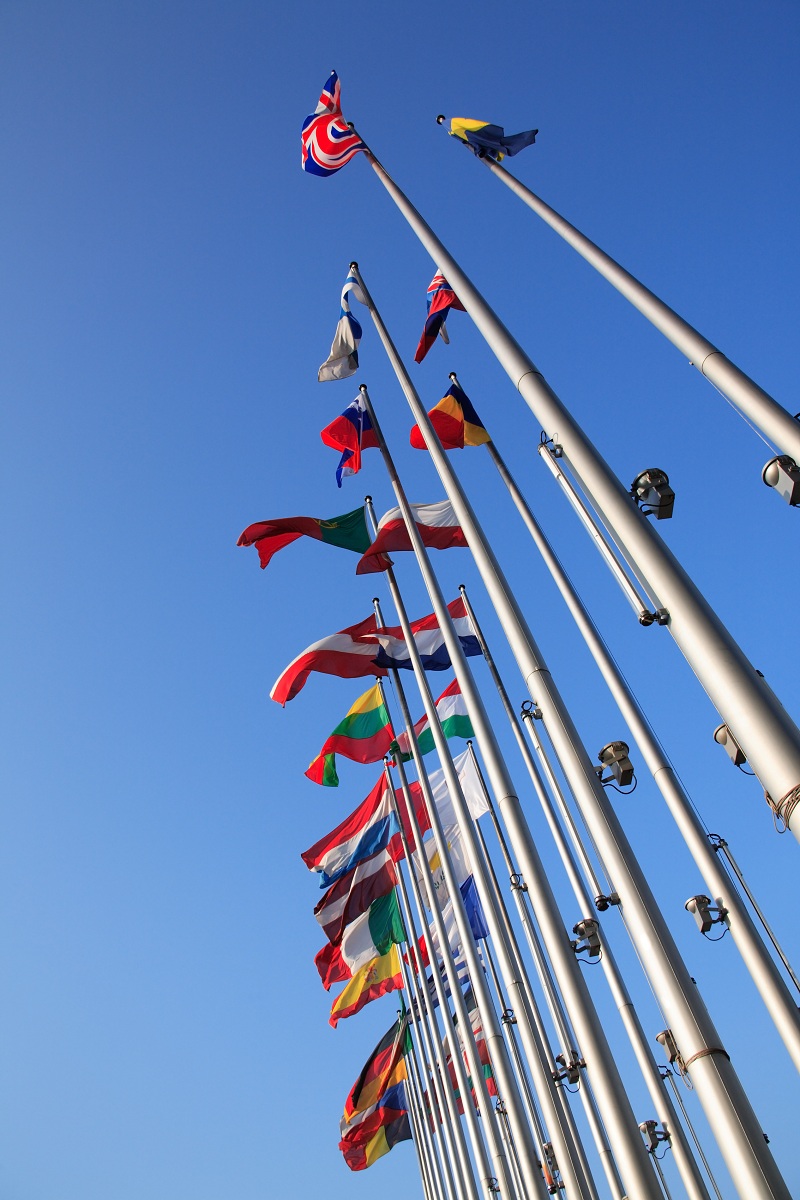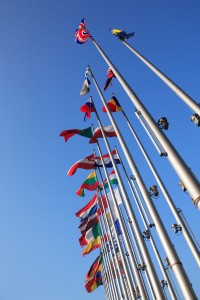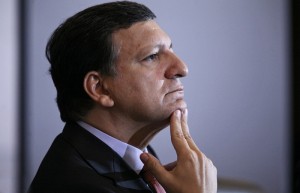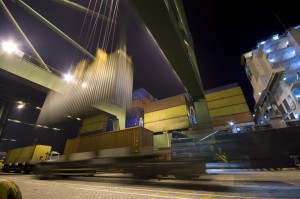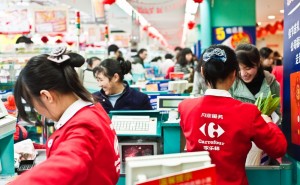From Indifference to Engagement to Dominance? China and International Organizations
Introduction
Since the founding of the People’s Republic of China in 1949, its strategy with regard to involvement in international organizations has undergone a complete U-turn. As political and economic international organizations such as the United Nations and the Bretton Woods Institutions developed in the years after WWII, the PRC remained skeptical and suspicious of becoming entrapped in a framework set by external, Western, and ordinarily capitalist powers. Instead, it pursued a policy of non-engagement in multilateral institutions, with very few exceptions. Those it did involve itself with, such as the Non-Aligned Movement, evidenced attempts by China to disassociate itself from the superpower struggle between the US and the Soviet Union. Although this was partly driven by the politics of the Cold War that determined so much of international relations at that time, it also reflected the mistrust felt in China towards such institutions, rooted in the historical sense of injustice felt at its treatment by the League of Nations, which failed completely to arrest the invasion of China by Japan, a League member.
China began to rethink its engagement in international organizations after the success of its economic reform program launched in 1978. As an increasing percentage of its GDP became generated through international trade, and its status as an international power began to rise, China came to determine that engagement with international organizations would be useful in resolving trade disputes, gaining access to markets, promoting its perspectives on the international stage, and assuring established powers that its rise would be peaceful and would happen within the existing international framework. Today, China is not only a member of virtually all relevant international organizations, but it is also a key actor in many of them.
United Nations
Since the creation of the UN in the aftermath of World War II, one of the five permanent seats on the Security Council has been reserved for China. This seat was initially occupied by the Republic of China in Taiwan that was recognized as the government of all of China by most Western powers from 1949-1971. The People’s Republic of China, therefore, had no representation within the UN. This changed in 1971 when a UN General Assembly vote recognized the PRC as the legal government of China, effectively transferring all UN powers to the PRC, including Taiwan’s permanent seat on the Security Council and the veto that comes with it. This was an important step in the gradual global recognition, by international powers, that the PRC was the legitimate government of China. The ROC in Taiwan was expelled from the UN as it was no longer recognized as a state, and has never been readmitted, despite sporadic attempts from within Taiwan for it to be recognized. Thus, its membership in the UN had the immediate effect of facilitating the promotion of the PRC’s ‘one China’ policy, which ensured Taiwanwould never be officially recognized as separate from the PRC.
In its early years in the UN, China was relatively passive in its behavior, ordinarily abstaining in votes on peacekeeping operations (PKOs) and never participating in the operations themselves. During the 1971-1978 period, China voted in favor of roughly 40% of the resolutions that passed. This gradually began to change after 1978 with China increasing the number of motions it put forward. This more participative and assertive behavior continued in the 1990s, particularly from the first Gulf War onwards, when China not only began to vote in favor of peace keeping operations, PKOs, but actually became involved in the operations directly. By 2008, China was contributing approximately 2500 troops to UN PKOs, a similar number to France and significantly more than the US. The record since the turn of the millennium shows that more than 95% of resolutions that pass in the UNSC receive the support of China. This demonstrates both a shift in the behavior of China itself, which has become much more willing to take an active role in the process of international governance, as well as in the attitude of other UNSC members, who have come to see China’s support, as opposed to its passivity, as crucial to the perceived legitimacy of any UN action.
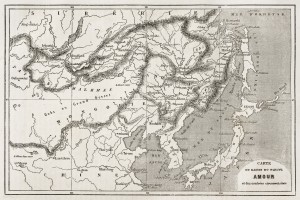 China’s increased willingness to engage in the UN framework has resulted in a slight contradiction in its official policy regarding the sovereignty of nations. While the rhetoric continues to stay on the message of respect for sovereignty and the maintenance of the principle of non-interference, China’s voting pattern suggests that there are circumstances in which it is willing to forgo this principle. Its acquiescence in 2002 on UN resolution 1441 which, ultimately, was used to justify the invasion of Iraq (though it should be noted that a clause on Iraq’s sovereignty and territorial integrity was included partly at China’s behest) exemplified this. An even starker example came in 2011 when resolution 1973 established a no-fly zone and authorized “all necessary measures” to protect civilians in Libya. That China saw fit to allow this resolution to pass (both China and Russia abstained) appears to demonstrate the limit of its international defense of the principle of sovereignty. However, such an increased willingness to allow such motions to pass in the UNSC should not be viewed as evidence that China has become a pushover in its dealings with Western powers – rather, it ought to be seen as proof that China has learned how to operate within the institutions of the UN, protecting its own key interests while promoting an image of a responsible world power.
China’s increased willingness to engage in the UN framework has resulted in a slight contradiction in its official policy regarding the sovereignty of nations. While the rhetoric continues to stay on the message of respect for sovereignty and the maintenance of the principle of non-interference, China’s voting pattern suggests that there are circumstances in which it is willing to forgo this principle. Its acquiescence in 2002 on UN resolution 1441 which, ultimately, was used to justify the invasion of Iraq (though it should be noted that a clause on Iraq’s sovereignty and territorial integrity was included partly at China’s behest) exemplified this. An even starker example came in 2011 when resolution 1973 established a no-fly zone and authorized “all necessary measures” to protect civilians in Libya. That China saw fit to allow this resolution to pass (both China and Russia abstained) appears to demonstrate the limit of its international defense of the principle of sovereignty. However, such an increased willingness to allow such motions to pass in the UNSC should not be viewed as evidence that China has become a pushover in its dealings with Western powers – rather, it ought to be seen as proof that China has learned how to operate within the institutions of the UN, protecting its own key interests while promoting an image of a responsible world power.
China has positioned itself within the UN as something of a voice for developing nations and frequently counts on the support of these countries in votes in the General Assembly (where the veto it wields on the Security Council cannot be used). This has been particularly useful in avoiding censure over human rights abuses. As by far the largest member of the G77 group of developing nations, China is able to use its influence both to secure support from, and to advance the interests of, a significant bloc of the UN’s membership. Although this makes it a major player in the General Assembly, the most powerful body of the UN remains the Security Council where it continues to have to work with the other permanent members.
China is not only involved in the Security Council and General Assembly, but is also active in most other UN organizations through which it continues to pursue its core national objectives. For instance, even during the 2003 SARS and 2006 Avian Flu epidemics, China maintained its stance of blockingTaiwan’s participation in the World Health Organization, on the grounds that statehood is required for membership and the PRC is the sole legitimate government of China with Taiwan as part of China’s territory. Such an intransigent position was criticized both in Taiwan and by health experts in the organization with some suggesting that lives were lost as a result, though there are no credible statistics to support this claim. What this episode clearly demonstrated was China’s “red line” with regard to its position on Taiwan and the position of strength it now occupies in the UN structure through which it can pursue its objectives.
World Trade Organization
After protracted negotiations China finally gained membership of the WTO on December 11th 2001, a full fifteen years after it originally applied to join, symbolically three weeks before Taiwan – under the name “Separate Customs Territory of Taiwan, Penghu, Kinmen, and Matsu (Chinese Taipei)” – also accessed. It should be noted that the WTO is an organization that does not require statehood for membership and Hong Kong has been a member since the organization’s inception in 1995. China’s leadership during the long negotiations went to great lengths to ensure China gained its place. Both Jiang Zemin and the then Premier Zhu Rongji invested enormous personal political capital in the process and Zhu, in particular, came under fire for the level of concessions made in order to be eligible for entry, particularly with regard to a commitment that China would open its telecommunications industry to foreign competition. The perception, both within China and among some analysts abroad, was that the requirements for Chinese admission were greater than those asked of other countries. In particular the decision not to bestow “Market Economy” status on China seems to have been politically motivated: the requirements that were laid out for China to achieve this status have been demonstrated by the Financial Times, a respected UK newspaper, to be so stringent as to rule out any member of the WTO from passing the test. The result of this apparently un-passable test is that when China is accused of breaches of WTO rules, the arbitration process measures the validity of such claims against other countries’ economic indices. For example, when China is accused of ‘dumping’ – selling goods into another economic area at below the price they are produced– it is not China’s own labor and raw material costs that are used to determine if this is the case. On occasion, Malaysia has been used despite wages in that country being significantly higher than in China.
Despite popular perceptions of China as a country engaging in unfair practices in global trade, particularly within regard to its apparent currency manipulation and the practice of ‘dumping’, its early years in the WTO were remarkably non-confrontational. In fact, no cases were brought against China in its first two years of membership, and China itself did not bring a case against another member until as recently as 2009. In those cases that have been bought against China, all of which have been by the EU or the US, it has struggled at times to defend itself, winning just one of the dispute cases that have gone through to completion. China also seems to have followed a similar pattern in its behavior in the WTO as it did in the UN, in that it spent its first few years learning how to operate within the WTO system, before attempting to become a major player. China’s increased activity over the last 2 or 3 years, during which time it has gone from bringing no cases against other members to averaging 3 per year (all of which have been against either the US or the EU) is evidence of this. Recently, despite the structural disadvantage that China faces by not being a “market economy”, it has had some success. For example, in 2009 China successfully brought a case against the US to end the ban on its poultry exports that had been in place since the Avian Flu epidemic. Similarly, in 2010 the WTO ruled that the EU’s anti-dumping measures on Chinese sales of fasteners were unfair and too broadly applied. Despite these victories, China’s success rate in successfully resolving WTO disputes remains below the average for the organization.
World Bank and International Monetary Fund
Along with the General Agreement on Trade and Tariffs (GATT), which later became the WTO, the World Bank and the IMF made up the key international financial institutions that came into being in the post-World War II era. China has officially been a member of both the World Bank and the IMF since their founding, although just as with the UN, responsibility for these positions was with the Republic of China on Taiwan until 1980, when the PRC took over control. As with the UN, Taiwan has since been denied participation in both organizations. The PRC has called upon the IMF for financial assistance on only two occasions, both of which occurred during the early period of its post-1978 economic reform and restructuring program, and both loans have since been repaid in full. In recent years, as China’s international standing has continued to grow, China has pushed hard for greater influence for itself and other developing nations within both organizations. It has had only limited success to date. It currently holds 96,000 votes in the IMF, equivalent to 3.81% of the total, making it the sixth largest behind the US (16.76%), Japan (6.24%), Germany (5.81%), France (4.29%) and the UK (4.29%). These figures represent an increase in the voting share for China that came into force in 2008. However, under IMF voting rules, a total of 15% is required to veto any proposal, meaning that the US alone, or a combination of any four of the other G7 countries without the US, has this power. China is a long way from achieving such privilege. By increasing its agreed contribution to the budget of the IMF, China has (along with other developing nations) successfully campaigned for further reform. Thus, another shift in the make-up of these shares has been agreed in principle, but not yet implemented. Although China’s position is likely to improve as a result of these reforms, it is not clear how the final figures will appear once this agreement has been ratified, but a review is currently ongoing and this is expected to be completed in 2013. Voting in the World Bank system is more complex, as it is divided into several organizations, each of which has its own voting allocation. Despite recent reform and reallocation in favor of several developing countries that saw China as the largest beneficiary, China still remains a relatively small player. Since its foundation, the president of the World Bank has always been a US citizen. Similarly, the recent election of Christine Lagarde as the president of the IMF continued the pattern of Western Europeans heading that institution. Still, the appointment of Justin Yifu Lin, a Taiwanese-born citizen of the PRC, as Chief Economist at the World Bank represents a breakthrough of sorts. The domination of Western, developed nations in both of these organizations, however, is likely to continue for some time to come, despite the damage to reputations done by the financial crisis of 2008, a source of some resentment from within China.
G20
The G20, established in 1999 in recognition of the need to involve some of the larger developing nations in summits similar to those held by the G7 or G8, consists of 19 countries plus the EU. Since its inception, it has grown in significance, in no small part because of the inclusion of China, along with other major developing forces in global political and economic circles such as India and Brazil. These countries have pushed hard to make the G20 summit that takes place annually the premier event for global economic discussions and, consequently, to limit the importance of the G7 and G8 summits. While there has been some resistance to this, particularly from Japan which treasures its role in the G7 as a surrogate for its yearned-for but out-of-reach permanent place on the UN Security Council, the growing economic clout of China has meant this is, increasingly, the reality. Sideline summits have also given China a tremendous opportunity to promote symbols of its increased power on the world stage and one of the annual events of the G20 is the so-called G2 meeting that involves only China and the US. The existence of the G20, as opposed to an expanded G8, indicates China’s unwillingness to be enmeshed into yet another existent structure dominated by Western powers and, instead, to create a new system that incorporates other countries with potentially similar goals to its own, with whom it can form powerful alliances to overcome Western dominance.
Shanghai Cooperation Organization
Until very recently the Shanghai Cooperation Organization (SCO) received little attention in the West, but it has been a significant part of the PRC’s foreign policy since the mid 1990s. Formed as grouping of five countries – China, Russia, Kazakhstan, Kyrgyzstan, and Tajikistan – at a meeting in Shanghai in 1996, its initial objective was to foster greater military trust between central Asian neighbors. After its inception the group began to meet annually and became dubbed ‘the Shanghai Five’. The addition of Uzbekistan and a more formalized structure to the grouping saw it renamed as the SCO in 2001. Since then, several states in the region have expressed an interest in joining a group which has been mooted as an Asian rival to NATO – though this language is never used by the countries involved. Those expressing serious interest in joining the SCO include Pakistan and Iran who, along with India, Mongolia and Afghanistan, have observer status. In 2012, Turkey was granted ‘Dialogue Partner’ status, becoming the first NATO country to have official ties with the organization.
The SCO has expanded military cooperation between its member states to levels that could not have been achieved without it. Annual joint practice operations in various fields of conflict have increased to include a total of more than 5000 participants from all six member states. The majority of these come from the two largest militaries in the group – China and Russia – and the closer military and strategic ties between these two states is one of the most significant outcomes of the SCO’s development. However, the most important potential impact of the SCO is the creation of a multilateral framework of military alliances that does not include any Western power, and which has China as its assumed leader. Clearly China and Russia are the lynchpins of this organization, but the enthusiasm of the other four members, as well as the level of interest from Pakistan and Iran, makes the SCO a potentially significant actor in future international relations.
Future Trends
China’s policies on International Organizations are unrecognizable from those that were pursued prior to the Reform Era. China now seeks engagement and involvement, as its many international organization memberships and its active participation within the organizations testify. However, as a relative latecomer to virtually all organizations, China has a structural disadvantage in that it has to learn how to play by the rules that have already been set by others, which are not always to its advantage. While it has had some success promoting its objectives within these pre-existing power structures, being hampered by Western-originated frameworks remains a continued source of frustration for the Chinese leadership. China has tried to address this frustration by creating alliances with developing nations within the organizations to give it greater negotiating power. The instigation of the SCO and the promotion of the G20 are examples of how China can combat this, by instigating new institutions which place itself at the heart. It is also used its rising economic and political power to gain greater leverage in the international organizations, as when it demonstrated a willingness to increase financial contributions to the World Bank and the IMF in exchange for a greater share of the voting rights.
To date, China’s increased involvement in International Organizations has, for the most part, been consistent with its proclaimed world view: that of respect for sovereignty, non-interference in the internal affairs of other nations, opposition to hegemony or unilateralism, and the promotion of multilateralism. As China’s own stake in global political, economic, and security affairs continues to grow, it will be interesting to watch how firmly it can stick to such principles. There are already signs that it is willing to compromise on the reality of non-interference, even if the rhetoric continues unabated. China has, however, been utterly uncompromising in its insistence that any organization that requires statehood for membership must exclude Taiwan. Thus, Taiwan has been progressively and near-comprehensively marginalized in the international arena, allowed to participate in only limited ways in limited organizations. Despite numerous attempts to rejoin the UN, Taiwan will not, under any name, be able to do so. This represents a clear example of how China has used its involvement in international organizations to achieve one of its key domestic and foreign policy objectives.

